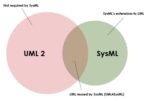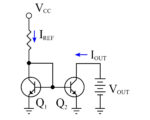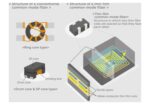Model-based systems engineering (MBSE) supports requirements development, design, analysis, verification, and validation of complex systems, especially cyber-physical systems and systems of systems. Verification (simulation) and validation (testing) are key elements of MBSE. Model in the loop (MIL), software in the loop (SIL), processor in the loop (PIL), and hardware in the loop (HIL) simulation and […]
What’s a digital shadow and how does it relate to a digital twin?
Depending on how they are used, digital shadows take different forms and can be created using different techniques. Digital twins, on the other hand, have a specific definition within model-based systems engineering (MBSE): a virtual representation of a device or system that spans its life cycle, from initial conceptualization and specification through end of life, […]
How do the military and aerospace use MBSE?
Model-based systems engineering (MBSE) is broadly defined as the structured use of digital modeling to support system features, requirements, design, verification, and validation extending from the conceptual design phase and continuing until end of life. The concept of systems engineering is deeply engrained in the military and aerospace communities. MBSE represents a shift from highly […]
How do SysML and model-based design relate to MBSE?
Model based design (MBD) is not a new concept; it’s been successfully applied to complex software systems for many years. MBD is often implemented using the unified modeling language (UML) for software development from the Object Management Group (OMG). Extending the concepts of MBD to cyber-physical systems, including both software and hardware, is a relatively […]
How do digital threads & digital twins fit in MBSE?
Digital threads and digital twins are used to create the virtual environments needed to implement model-based system engineering (MBSE), especially for complex cyber-physical systems. Digital threads are complete records of all details of specific aspects of product definition, development, and deployment, from conception through end of life. A digital twin is a comprehensive virtual representation […]
What’s MBSE and what does it mean for designers?
Model-based system engineering (MBSE) uses digital twins, digital threads, and domain models to replace document-based information exchanges during the system development process. It is widely used with complex cyber-physical systems in aerospace, energy, healthcare, and transportation to define features, design, analyze and validate a system using virtual tools. For designers, MBSE is an expansive concept. […]
What materials can be used to make miniature antennas?
Many antennas are mechanically simple and electrically complex at the same time. Mechanically an antenna usually has only one or two components, a dielectric layer (which can be the entire antenna) and a conductive layer. This FAQ begins with a brief review of dielectric materials and their importance to antenna performance. It then explores developments […]
How do you use a current mirror?
Current mirrors are common circuits but are mostly invisible, except to designers of analog or mixed-signal integrated circuits who can use large numbers of current mirrors on a single chip. A current mirror copies a current through one active device (such as a BJT or MOSFET) by controlling the current in another active device. If […]
What can you make with MEMS technology?
Microelectromechanical systems (MEMS) has several names, including micro-electro-mechanical systems, and micromechatronic systems. In Japan, MEMS is called micromachines, while in Europe, it’s referred to as microsystem technology (MST). Whatever name that’s used, MEMS devices are made using components measuring from 1 to 100 μm (0.001 to 0.1 mm), with MEMS devices ranging from 20 μm […]
How do you make inductors with films, foils, and flat wires?
Wire wound structures are the most common, but far from only, way to make inductors for audio, power conversion, radio frequency (RF), and other applications. Inductors are key components in various circuits, and designers need to fully understand available options. This FAQ starts with a brief background on wirewound inductors and then digs into the […]










